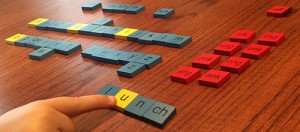 Samuel Torrey Orton (1879-1948), a neuropsychiatrist and pathologist, was a pioneer in focusing attention on reading failure and related language processing difficulties. He brought together neuroscientific information and principles of remediation. As early as the 1920s, he had extensively studied children with the kind of language processing difficulties now commonly associated with dyslexia and had formulated a set of teaching principles and practices for such children. Anna Gillingham (1878-1963) was a gifted educator and psychologist with a superb mastery of the language. Working with Dr. Orton, she trained teachers and compiled and published instructional materials.
Samuel Torrey Orton (1879-1948), a neuropsychiatrist and pathologist, was a pioneer in focusing attention on reading failure and related language processing difficulties. He brought together neuroscientific information and principles of remediation. As early as the 1920s, he had extensively studied children with the kind of language processing difficulties now commonly associated with dyslexia and had formulated a set of teaching principles and practices for such children. Anna Gillingham (1878-1963) was a gifted educator and psychologist with a superb mastery of the language. Working with Dr. Orton, she trained teachers and compiled and published instructional materials.
In the 1930’s Dr. Orton and Anna Gillingham developed the Orton-Gillingham approach to reading instruction for students with dyslexia. This theory combines multi-sensory techniques along with the structure of the English language. Those items taught include: phonemes and morphemes, such as prefixes, suffixes, and roots. Common spelling rules are introduced as well. Multi-sensory education incorporates the three learning pathways, which are: auditory, kinesthetic, and visual. This approach is beneficial not only for students with dyslexia, but for all learners.
There are many schools and methods available for students, parents and school-systems to incorporate into their learning program that follow the basics of the Orton-Gillingham approach.
Multisensory. The lessons involve all the major pathways to the brain: visual, auditory, and kinesthetic. Students learn best when they get involved in the spelling lessons using sight, sound, and touch.
Sequential. Concepts are taught in a logical, well-thought-out sequence.
Incremental. Each lesson carefully builds upon the previous lesson. Lessons progress from simple to more complex.
Cumulative. The method integrates constant review of previously-taught concepts.
Individualized. The unique needs of each student are met. Some students need extra review in order to master a concept, while others are ready for additional challenges. This individualized approach guarantees that the student is always making progress without forgetting what has been previously taught.
Phonics. Based on phonograms.
Explicit. Students are taught exactly what they need to know in a direct manner. They don’t have to guess or try to figure out the patterns of the English language by themselves. The teaching is very clear and straightforward.
The Barton Reading & Spelling System is a one-on-one tutoring system that will greatly improve the spelling, reading, and writing skills of children, teenagers or adults who struggle due to dyslexia or a learning disability.
The Academy of Orton-Gillingham Practitioners and Educators accredits training programs for individuals aspiring to become Orton-Gillingham practitioners. It also accredits, in schools, camps and clinics, Orton-Gillingham instruction that meets Academy standards.
The Institute for Multi-Sensory Education’s proprietary professional development provides direct, systematic and sequential instruction that empowers educators to teach the foundation of the English language. Our revised and expanded research-based Orton-Gillingham training provides exceptional staff development. The Institute’s instructional approach is ideal for: general education, special education, reading teachers, and learning resource room specialists.
All About Spelling combines the Orton-Gillingham approach with the latest research and proven spelling rules. This applies all of the features of the Orton-Gillingham method to teaching spelling. Now it is possible for you to teach spelling effectively without extensive training or prior experience.
Go Phonics is a systematic multisensory phonics for K-2 Language arts for breakthrough reading and spelling success.
Reading Horizons At-Home Solutions provides Discovery and Elevate At-Home Products for individual and classrooms combines auditory, visual, and kinesthetic activities.
I was tutored using the Barton Reading and Spelling System as recently as 2012. It was very difficult for me to realize that 20 percent of 1st and 2nd graders can decode sounds that they can hear better that I could without the tutoring. It’s never to late to improve you listening and spelling skills. Judgement of your intelligence from how you speak and write is very much in the adult world. I am admittedly partial to the Barton program since it is through the first 3 or 4 lessons that I came to admit and accept my dyslexia and phonological weaknesses and developed the confidence that this a a difference NOT a disorder.
No Comments Yet